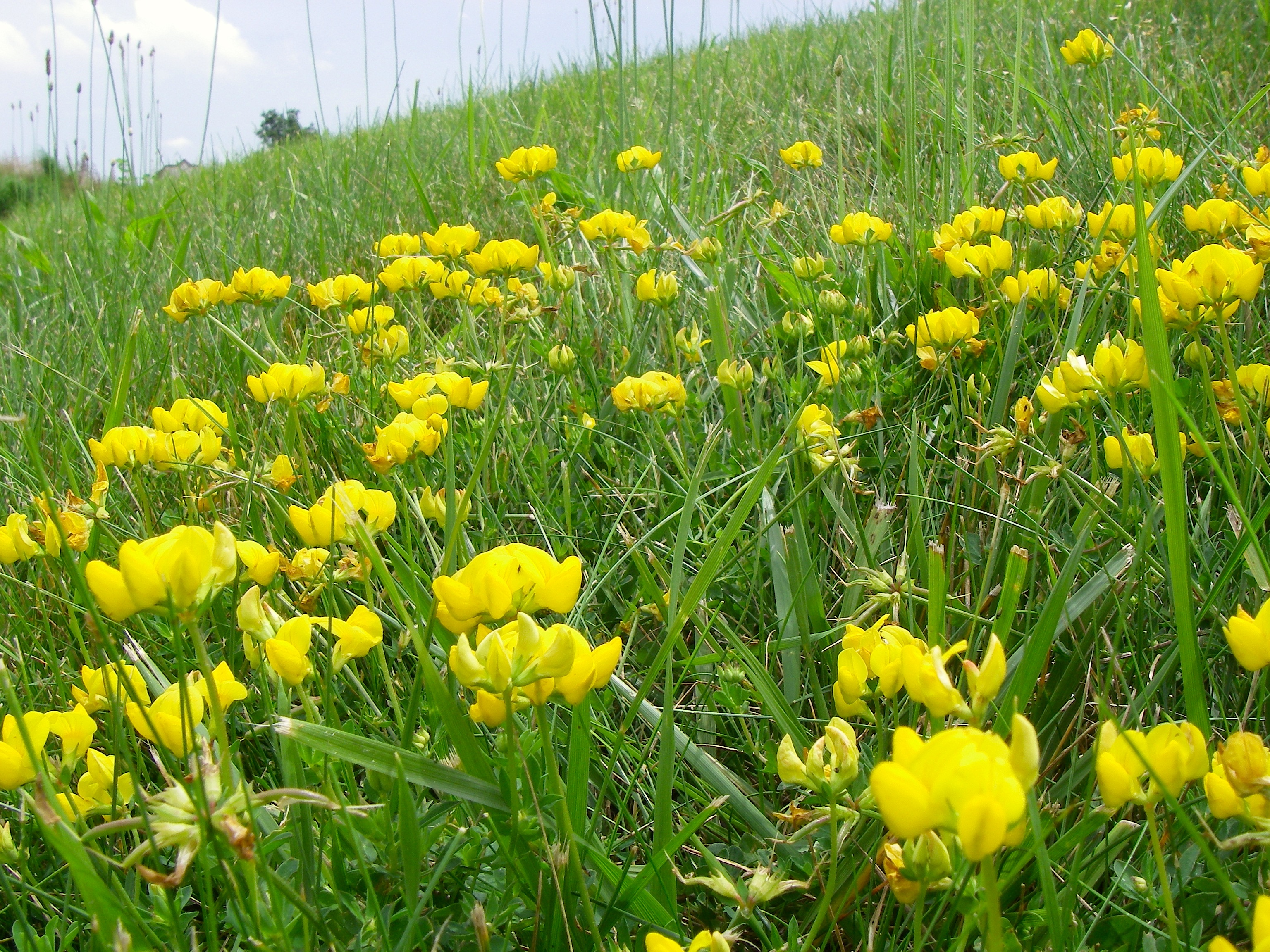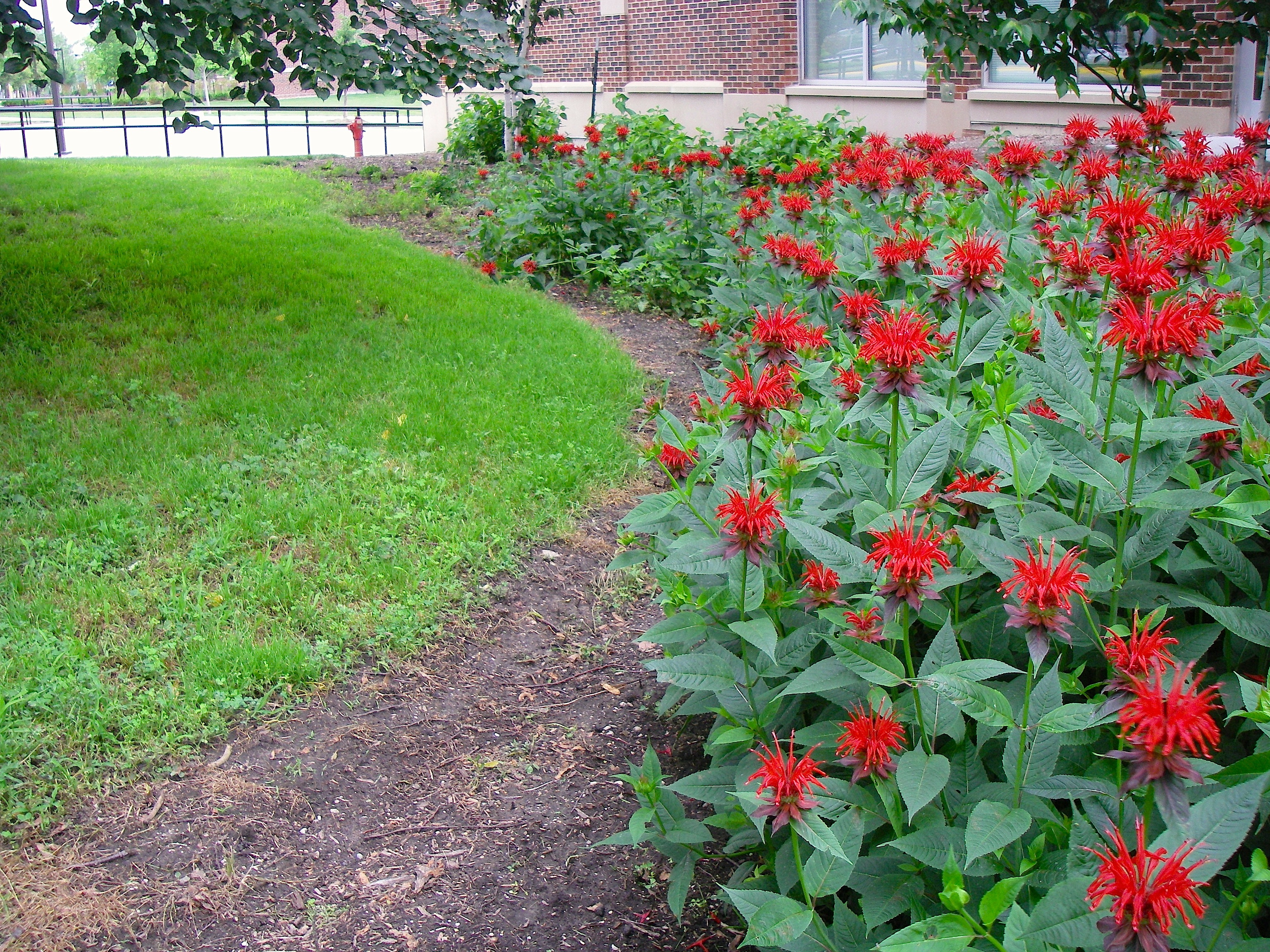Turfgrass Insects
PROTECTING POLLINATORS FROM INSECTICIDE APPLICATIONS IN TURFGRASS
Douglas Richmond, Turfgrass Entomology Extension Specialist
If you want to view as pdf, click here
As evidence mounts, there is growing concern neonicotinioid insecticides may play a role in the declining health of pollinators and other wildlife across North America. A string of unfortunate and widely publicized events, have placed this class of insecticides at the center of the debate surrounding pollinator decline. This publication provides turfgrass man- agement professionals with suggestions aimed at minimizing the potential negative impacts of neonicotinoids and other insecticides on pollinators.
Neonicotinoids are extremely toxic to bees and despite the fact that turf and ornamental systems comprise only about 4% of neonicotinoid usage in the U.S., they are still the most widely used insecticides in turfgrass systems (Table 1). Products containing the neonicotinoids clothianidin, dinotefuran, imidacloprid, and thiamethoxam represent a useful set of chemistries for controlling several key turfgrass insect pests. However, their breadth of use does carry with it some risk of pollinator exposure. Not only do neonicotinoid insecitcides exhibit strong contact activity against insects, they also act systemically, being taken up by plants and distributed throughout plant tissues via the plant vascular system. As a result, neonicotinoid insecticides may end up in various plant tissues, including nectar and pollen, for an undetermined amount of time.
To minimize potential negative impacts of insecticides on pollinators and other beneficial insects, consider the following suggestions:
Don’t treat areas where pollinators are likely to forage
Pollinators forage for nectar and pollen on a wide range of flowering plants, including some of our most common turfgrass weeds (Fig. 1). If flowering weeds such as dandelion (Fig. 2), birdsfoot trefoil (Fig. 3) or white clover are present and flowering at noticeable levels:Avoid treating these areas with any insecticide. This is consistent with most insecticide labels that advise against applications to blooming, nectar-producing plants that attract pollinators.
Remove weeds with herbicide (Fig. 4). Effective weed control should be a prerequisite for using insecticides in turfgrass.
Mow the turf immediately before spraying any insecticide. Mowing will remove ≥ 90% of the flowers and reduce pollinator foraging. When neonicotinoids are used, mow frequently enough to keep these blooms from returning as neonicotinoids may be taken up from the soil and moved systemically throughout the plant for an extended period of time.

Figure 1. Honeybees and other pollinators forage on a variety of flowering weeds that are common in turfgrass such as white clover shown in this photograph. (Photo credit: A. Patton)

Figure 2. Dandelion is a common turfgrass weed that is highly attractive to pollinating insects including hover flies as shown in this photo. (Photo credit: A. Patton)

Figure 3. Birdsfoot trefoil is attractive to pollinators and is especially common in low maintenance turfgrass.

Figure 4. Judicious use of broadleaf herbicides can dramatically reduce the incidence of flowering broadleaf weeds that are attractive to pollinators. The area to the left of the dashed line in the photo was untreated while the area on the right was treated with a broadleaf herbicide.
Maintain buffers
Systemically active neonicotinoid insecticides applied to protect the turf could inadvertently be taken up by flowering plants within adjacent landscape plantings.
Leave a buffer strip of 2-3 feet between the treated turf and the border of any landscape bed to minimize the potential for unintended uptake of neonicotinoid insecticides by the roots of flowering ornamentals (Fig. 5).
- Wait until petal fall before treating flowering ornamentals
Professional turfgrass managers may sometimes be required to control insect pests of flowering landscape trees and other ornamental plants. When alternatives to neonicotinoids are not available:
Wait until flower petals fall before applying neonicotinoids. After petal fall, pollinators will not be attracted to these plants.
Never apply any insecticides directly to the blooms of flowering plants.
The potential for neonicotinoids to persist and move into the flowers of trees and other ornamental plants one year after application is not currently known, so insecticide use in and around such plants should be limited as much as possible.
-
Embrace alternatives
Although there appears to be no immediate threat of losing neonicotinoids from our insect management arsenal, there are plenty of alternatives available for use against key turfgrass insect pests. See Table 2 for a list of turfgrass insect pests controlled by neonicotinoids and Table 3 for a list of available alternatives.
Neonicotinoid insecticides can be orders of magnitude more toxic to pollinators than other classes of insecticides.
There are currently a number of effective alternatives to neonicotinooids that are labeled for use against turfgrass insect pests.
Managed landscapes are usually composed of large turfgrass areas with landscape beds present in various arrangements throughout. These beds often contain flowering plants that are attractive to a variety of pollinators and other beneficial insects. Although the boundaries between landscape beds and turf are usually well defined above ground, the intermingling of plant roots may create a much softer boundary in the soil. Therefore:

Figure 5. Landscape beds often contain flowering plants that are attractive to pollinators. Leaving an untreated buffer strip between the turf and bed may help reduce the potential for unintended uptake of neonicotinoid insecti- cides by flowering plants following applications targeting turfgrass insect pests.
| Table 1. Ecotoxicology of several common turfgrass insecticides in different animal systems. LD50 represents amount of material per unit body mass (mg/kg) or individual (µg/bee) required to kill 50% of a test population. LC50 represents the concentration of material in water required to kill 50% of a test population. Lower LD50 and LC50 values mean greater toxicity. |
|---|
| Insecticide (Trade Name/Company) | Insecticide Class | Mammal Toxicity LD50(mg/kg)a | Bird Toxicity LD50 (mg/kg)a | Fish Toxicity LD (mg/liter)b 50 | Honey Bee LD (µg/bee)c50 |
|---|---|---|---|---|---|
| Beta-cyfluthrin (Tempo/Bayer) | Pyrethroid | >>77 | >2,000 | 0.000068 | >0.001 |
| Bifenthrin (Talstar/FMC) | Pyrethroid | >54.5 | 1,800 | 0.00026 | >0.1 |
| Carbaryl (Sevin/Bayer) | Carbamate | >614 | >2,000 | >2.6 | >0.14 |
| Chlorantraniliprole (Acelepryn/Syngenta) | Diamide | >5,000 | >2,250 | >>12 | >>4 |
| Chlorpyrifos (Dursban/Dow) | Organophosphate | >64 | >13.3 | 0.0013 | >0.059 |
| Clothianidin (Arena/Nufarm; others) | Neonicotinoid | >>500 | >430 | >104 | >0.004 |
| Cyantraniliprole (Ference/Syngenta) | Diamide | >5,000 | >2,250 | >>11.1 | >0.116 |
| Deltamethrin (Deltagard/Bayer) | Pyrethroid | >87 | >2250 | 0.00026 | 0.0015 |
| Dinotefuran (Zylam/PBI-Gordon) | Neonicotinoid | >2,000 | >2,000 | >>100 | >0.023 |
| Imidacloprid (Merit/Bayer;others) | Neonicotinoid | >424 | >152 | >211 | 0.0037 |
| Indoxacarb (Provaunt/Syngenta) | Oxadiazine | >268 | >98 | >0.65 | >0.094 |
| Lambda-cyhalothrin (Scimitar/Syngenta) | Pyrethroid | >56 | >3,950 | 0.00021 | >0.038 |
| Permethrin (Astro/FMC) | Pyrethroid | >>430 | >9800 | 0.0125 | >0.29 |
| Spinosad (Conserve/Dow) | Biorational | >5,000 | <2,250 | >2.690 | >0.024 |
| Thiamethoxam (Meridian/Syngenta) | Neonicotinoid | >1,563 | >576 | >>125 | >0.005 |
| Trichlorfon (Dylox/Bayer) | Organophosphate | >212 | >36.8 | >0.7 | >>0.4 |
| Zeta-cypermethrin (Talstar Xtra/FMC) | Pyrethroid | >86 | >5124 | 0.00069 | >0.002 |
| *Toxicity refers only to active ingredient and does not account for formulation. Data from IUPAC. a LD for mammals and birds represents acute oral toxicity. b LC for fish represents acute 96-hour toxicity. cLD for honey bees may represent either acute contact or oral toxicity. |
|---|
| Table 2. Neonicotinoid insecticides labeled for use in turfgrass and common arthropod pests controlled. |
|---|
| Insecticide (Trade Name/Company) | Insecticide Class | White Grubs | Billbugs | Caterpillars | Chinch Bugs | Crane Flies |
|---|---|---|---|---|---|---|
| Clothianidin (Arena/Nufarm; others) | Neonicotinoid | X | X | X | X | X |
| Dinotefuran (Zylam/PBI-Gordon) | Neonicotinoid | X | X | X | X | |
| Imidacloprid (Merit/Bayer; others) | Neonicotinoid | X | X | |||
| Thiamethoxam/ (Meridian/Syngenta) | Neonicotinoid | X | X | Xa | X | X |
| *Always consult label directions for specific timing and application recommenations. a Labeled for use against sod webworms, but not cutworms or armyworms. |
|---|
| Table 3. Alternatives to neonicotinoid inseticides labeled for use in turfgrass and common arthropod pests controlled. |
|---|
| Insecticide (Trade Name/Company) | Insecticide Class | White Grubs | Billbugs | Caterpillars | Chinch Bugs | Crane Flies |
|---|---|---|---|---|---|---|
| >Beta-cyfluthrin (Tempo/Bayer) | Pyrethroid | X | X | X | ||
| Bifenthrin (Talstar/FMC) | Pyrethroid | X | X | X | X | |
| Carbaryl/ (Dursban/Dow) | Carbamate | X | X | X | X | X |
| Chlorpyrifos a (Dursban/Dow) | Organophosphate | X | X | X | X | |
| Chlorantraniliprole (Acelepryn/Syngenta) | Diamide | X | X | X | X | |
| Cyantraniliprole (Ference/Syngenta) | Diamide | X | X | X | X | |
| Deltamethrin (Deltagard/Bayer) | Pyrethroid | X | X | X | ||
| Indoxacarb (Provaunt/Syngenta) | Oxadiazine | X | X | |||
| Permethrin (Astro/FMC) | Pyrethroid | X b | X | |||
| Lambda-cyhalothrin (Scimitar/Syngenta) | Pyrethroid | X | X | |||
| Spinosad (Conserve/Dow) | Biorational | X | ||||
| Trichlorfon (Dylox/Bayer) | Organophosphate | X | X | X | X | X |
| Zeta-cypermethrin (Talstar Xtra/FMC) | Pyrethroid | X | X | X | X |
| *Always consult label directions for specific timing and application recommenations. a For use only on turfgrass grown for sod or seed. b Labeled for use against sod webworms, but not cutworms or armyworms. |
|---|
READ AND FOLLOW ALL LABEL INSTRUCTIONS. THIS INCLUDES DIRECTIONS FOR USE, PRECAUTIONARY STATEMENTS (HAZARDS TO HUMANS, DOMESTIC ANIMALS, AND ENDANGERED SPECIES), ENVIRONMENTAL HAZARDS, RATES OF APPLICATION, NUMBER OF APPLICATIONS, REENTRY INTERVALS, HARVEST RESTRICTIONS, STORAGE AND DISPOSAL, AND ANY SPECIFIC WARNINGS AND/OR PRECAUTIONS FOR SAFE HANDLING OF THE PESTICIDE.
January 2015

It is the policy of the Purdue University Cooperative Extension Service that all persons have equal opportunity and access to its educational programs, services, activities, and facilities without regard to race, religion, color, sex, age, national origin or ancestry, marital status, parental status, sexual orientation, disability or status as a veteran. Purdue University is an Affirmative Action institution. This material may be available in alternative formats.
This work is supported in part by Extension Implementation Grant 2017-70006-27140/ IND011460G4-1013877 from the USDA National Institute of Food and Agriculture.
1-888-EXT-INFO
www.extension.purdue.edu
Order or download materials from www.the-education-store.com


